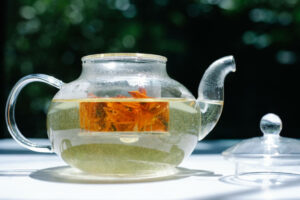Beyond their traditional uses, smelling salts have found a niche among athletes seeking a chemical boost. But what exactly is the purpose of these pungent stimulants? Are they merely an age-old remedy or a viable medicinal aid?
Contrary to popular belief, the active ingredient in smelling salts isn’t sodium but rather ammonium carbonate. This compound, when combined with water, produces ammonia gas. Surprisingly, it has historical ties to baker’s ammonia and finds its way into Scandinavian Christmas treats like Speculoos and Lebkuchen.
Ammonia gas, though a crucial element in smelling salts, tends to have a pungent odor, often masked by scents like perfume or floral fragrances.
Differentiating true-smelling salts from fragrant spirits of ammonia is crucial. Genuine-smelling salts induce rapid inhalation reflexes, irritating nasal membranes and lungs. This prompts increased oxygen intake, potentially aiding in reviving consciousness.
However, some concoctions marketed as “smelling salts” are, in fact, fragrant spirits of ammonia—combinations of ethanol, perfume, and diluted ammonia, lacking the potency of authentic smelling salts.
While medical studies acknowledge the usefulness of smelling salts in reviving individuals who’ve fainted, concerns about ammonia gas toxicity persist. Ammonia gas, in large quantities, can harm the lungs, induce blindness, and even prove fatal if inhaled extensively. Its highly caustic and explosive nature raises red flags, highlighting the need for caution in its use.
However, when used as intended—snorted in small amounts—smelling salts typically cause localized discomfort to nasal passages and the pulmonary system. No documented cases exist of fatal ammonia gas poisoning due to the use of smelling salts.
The use of smelling salts traces back to ancient Roman times when they were utilized to revive the unconscious. Over the years, these stimulants evolved from potential alchemical connections to practical applications in altering dyes during the Middle Ages.
Their popularity surged during the Victorian era when they were known as “lady revivers,” commonly carried by police and emergency personnel. Even in the world of sports, particularly boxing, smelling salts were once a go-to for reviving athletes after head injuries.
Triggering Consciousness
Smelling salts, known for arousing consciousness, release ammonia gas (NH3) upon use, which irritates the nasal and lung membranes. This irritation triggers an inhalation reflex, altering breathing patterns and potentially enhancing respiratory flow rates, leading to heightened alertness.
Medical Approval and Misuse
However, these salts lack approval from the FDA as stimulant drugs. Recent warnings from the FDA advise against using specific smelling salt products—like Nose Slap and Soul Slap—that claim to boost energy and alertness, emphasizing their unapproved status and potential risks.
Safe Usage Limits
Commercial smelling salts typically contain diluted ammonia concentrations of 50-100 ppm, considered harmless. Yet, prolonged exposure exceeding an hour at lower concentrations may induce irritation and mild side effects.
Seeking Alternatives
For those seeking natural alternatives to ammonia-based smelling salts, options like peppermint oil, eucalyptus oil, or lavender oil offer refreshing scents. These can be topically applied or diffused to help athletes feel more focused and alert before workouts or competitions.
Shelf Life and Potency
The lifespan of smelling salts averages around 6 months. Once opened, their potency dwindles over 1-6 months, affected by exposure to oxygen. Frequent openings accelerate drying and diminish their efficacy.
Boxing Ban and Safety Concerns
Despite their past popularity in boxing, smelling salts were eventually banned due to safety concerns. Trauma patients using these salts could unknowingly suffer from neck injuries. The sudden reflexive head movement upon smelling the noxious scent might worsen an injured spine, potentially leading to paralysis.
Modern-Day Usage and Athletes
While banned in certain sports due to safety concerns, smelling salts have seen a resurgence in use, notably in contact sports like football and hockey. High-profile athletes, including Peyton Manning, Tom Brady, and Michael Strahan, have acknowledged using or been spotted sniffing smelling salts on the sidelines.
Pros and Cons of Smelling Salts
Pros
- Smelling salts serve as rapid arousal agents, releasing ammonia gas upon use. This triggers an inhalation reflex, altering breathing patterns and potentially improving respiratory flow rates. Their quick action makes them valuable in situations requiring swift revival or alertness.
- The ammonia gas released by smelling salts can prompt increased alertness. The irritation to nasal and lung membranes triggers physiological responses that can lead to heightened consciousness. This effect is particularly beneficial for athletes needing an immediate boost before physical exertion.
Cons
- Despite their historical usage, smelling salts lack approval from the FDA as stimulant drugs. Concerns regarding their safety and unregulated use prompt caution, especially considering their potential misuse in various contexts, including sports.
- Extended exposure to smelling salts, even at diluted concentrations, can lead to irritation and mild side effects. Prolonged inhalation may induce discomfort, and its misuse or overuse can pose risks to nasal passages and the pulmonary system.
- In certain scenarios, like trauma incidents, the reflexive head movement upon smelling the noxious scent of these salts may exacerbate neck injuries. The sudden jerk away from the stimulus might worsen an injured spine, potentially leading to serious consequences like paralysis.
Shelf Life and Efficacy
The shelf life of smelling salts averages around 6 months, with potency diminishing upon repeated exposure to oxygen. Frequent openings hasten the drying process, affecting their efficacy over time.
FAQs
How often should you use smelling salts?
Limit your usage of smelling salts to occasional and necessary instances. Avoid frequent or prolonged exposure, as prolonged inhalation can lead to irritation and mild side effects.
What precautions should you take?
Prioritize safety measures when using smelling salts. Avoid using them near sensitive areas like the eyes or inhaling them excessively. Ensure adequate ventilation and use them in well-ventilated areas.
Are there any health risks?
Extended exposure or misuse of smelling salts can potentially cause discomfort, irritation, or mild side effects in the nasal passages and pulmonary system. Use them cautiously to avoid adverse effects.
How long do smelling salts last?
The shelf life of smelling salts typically spans around 6 months. However, once opened, their potency diminishes over time, especially if exposed to frequent openings and oxygen.
How should you store smelling salts?
Store smelling salts in airtight containers to prevent exposure to air and moisture, which can impact their potency. Keep them in a cool, dry place away from direct sunlight.
Are there natural alternatives?
Explore natural alternatives like peppermint oil, eucalyptus oil, or lavender oil. These can offer similar refreshing scents and help enhance alertness without the potential risks associated with ammonia-based smelling salts.
When should you avoid using smelling salts?
Refrain from using smelling salts in situations of trauma or potential neck injuries, as the reflexive head movement induced by their scent might worsen spine injuries, leading to severe consequences.
Should you consult a healthcare professional?
If you have concerns about the use of smelling salts, or if you experience any adverse effects after usage, seek guidance from a healthcare professional. Their expertise can offer personalized advice tailored to your health condition.

Bees, known for their industrious nature, play a crucial role in ecosystems, particularly in pollination…

The process of preparing mushroom tea is very similar to the process of preparing any…

Discover the transformative power of the “Chakra Alignment Yoga Series.” Dive into a meticulously crafted…





